Hi and thanks for being here. Tomorrow (April 18) I’ll host a monthly online chat for supporters of this newsletter, with author and ultrarunning champ as a special guest. If you’d like to receive an invitation to the monthly Zoom and occasional bonus posts—and my deep gratitude—please consider upgrading your subscription to the paid level ($6/month or $60/annually).
Road marathons vs. ultras on trail
Did you follow the Boston Marathon on Monday? I did, and it triggered a small but hard-to-ignore desire to give a road marathon another try.
In 2022, I ran my 20th road marathon1, which I believed would be my last. The 100 other marathons and ultras I’ve run have all been on dirt. I told myself at the end of the last paved 26.2-miler that I’m done with the stress and precision of road marathoning. I prefer ultra-distance journeys on trail because they have so much more variety in terms of terrain and elevation profile, and they’re run at a more intuitive steady pace that rewards endurance and patience as much or more than speed.
I’m also crowd-averse. The scariest thing to me about a big-city marathon is not the pain and effort of meeting a time goal, but rather being surrounded by tens of thousands of people. The 2013 bombing forever haunts.
And yet, Boston’s spirit tempts me. Following a couple of friends who ran it Monday ignited that old spark to train and regain a smooth-flowing stride, a quicker cadence, and an up-tempo pace that I can barely maintain for just a couple of miles in these high-altitude mountains. Training for and executing a road marathon makes me feel more like the runner I used to be and less like the mountain-trekker I’ve become, who blends in hiking breaks on nearly every run.
In a road marathon, it’s stressful—but exciting and motivating—to monitor pace and to aim for each mile to hit within a range of only about 15 seconds. By contrast, on a hilly, technical trail run, the per-mile pace can vary by more than 10 minutes—from a sub-9 mile bombing downhill to a 20-minute mile hiking up a slope.
My first Boston in 2000, six years after I took up running and right before I turned 31, lives in mind as grainy photos and snippets of memories. I ran it as a new mom, after my daughter’s birth and before I got pregnant with our son later that year, before social media, blogging, and cameras on mobile phones. I remember most the giddy excitement and nerves of doing it—of leaving my baby and husband to travel back East to take part in this pinnacle of running.
I wore a Team In Training purple singlet and had a few packets of Gu safety-pinned to the waistband of my shorts (because women’s shorts didn’t have pockets back then). I took a bus to the start and stood shoulder to shoulder with others in a starting corral. The travel, excitement, and early-morning shuttle made me fatigued before even starting the run. But my legs and heart felt electrified as I ran past the screaming women at Wellesley, hugged my sister around mile 20, and finally saw the Citgo sign with one mile to go.
Quads cramping, I cared less about my finish time and more about being there. Enhanced by the millennial-year vibes (we all survived the threat of a Y2K meltdown! It’s a brand new day, as Sting sung on new year’s eve!), I became part of a giant wave of the best of the human spirit. I finished in an adequate 3 hours, 46 minutes, so stoked to get that medal and a Boston Marathon jacket.
Nine years later, I returned as part of a family trip (daughter 11, son almost 8). I had focused on PR’ing at the 2009 Napa Marathon six weeks earlier, in a time of 3:05, so Boston wasn’t my focus. I felt exhausted from the get-go after days of sightseeing with my kids and had a “crappy” run with pit-stop breaks, but still finished in 3:27 (so much faster than I can run now). Those tough 26 miles felt worth all the discomfort when, by chance, former Boston Marathon champ Uta Pippig—whose photo on the cover of Runner’s World motivated me when I started running in 1994—put a medal over my neck and hugged me at the finish.
I intended to return to Boston one more time. I ran the 2019 Napa Marathon and mustered a BQ time of 3:42. But then the pandemic hit, so in 2020 I ran a virtual version with repeat loops around Telluride’s Valley Floor, a mix of paved path and rooted, uneven trail. On that September day, wildfire smoke obscured the mountains. It was kind of ridiculous to attempt to run fast in high altitude and smokey air, but I mustered a 4:23 finish and felt proud because an average 10-minute pace in this climate is harder than it sounds.
Now, thanks to Boston last Monday, old ego-driven questions nudge me internally like a dare: Can you still break 4 hours? What’s so hard about stringing together 9ish-minute miles, which used to be your easy recovery pace?! Would you have the discipline to train? What scares and excites you about it? Shouldn’t you face your fears?
How about you—what’s your take on the pros/cons of road marathoning compared to trail and ultra? Does the Boston Marathon affect you in any way? Please share in the comments below.
Shout-out to friend and reader
, the OG trail-running blogger, for running his 20th consecutive Boston. The ability to be an accomplished mountain/ultra/trail runner and still lay down a speedy road marathon inspires me.Related:
Short takes
Instead of a longer narrative this week, I have a mix of news and happenings to share.
New kicks:
With the news of lululemon, rabbit, and Tracksmith getting into the running-shoe biz, I think it’s time to give the independent women-specific Hilma brand a little love. Hilma launched in the fall of 2022, the brainchild of runner Brooke Torres, a member of this subscriber group. Her vision: to create a women’s-specific running shoe with a tread for trail but also great on road, using an online multidimensional and personalized sizing questionnaire.
Brooke sent me a pair of Hilmas a year ago, and they became my favorite “everything” shoe, so I just bought a second pair. I still run predominantly in supersized cushy Hokas—the fat-tire equivalent of a running shoe—but I like Hilmas for a grippier, lower-to-the-ground feel. Mostly, they’re so comfortable! I can run in them if I want to, on road or trail, but mostly I use them for gym workouts and walking around town. I plan to use my new pair for speedier paved runs, since they’re lighter than the Hokas. I’m super impressed by how Torres, who’s only 34, has created her own successful running-shoe brand. Read Hilma’s origin story here in Outside or in Runner’s World (paywalled). Then head to their site and shop for a pair.
I hope you’ll pay attention to this:
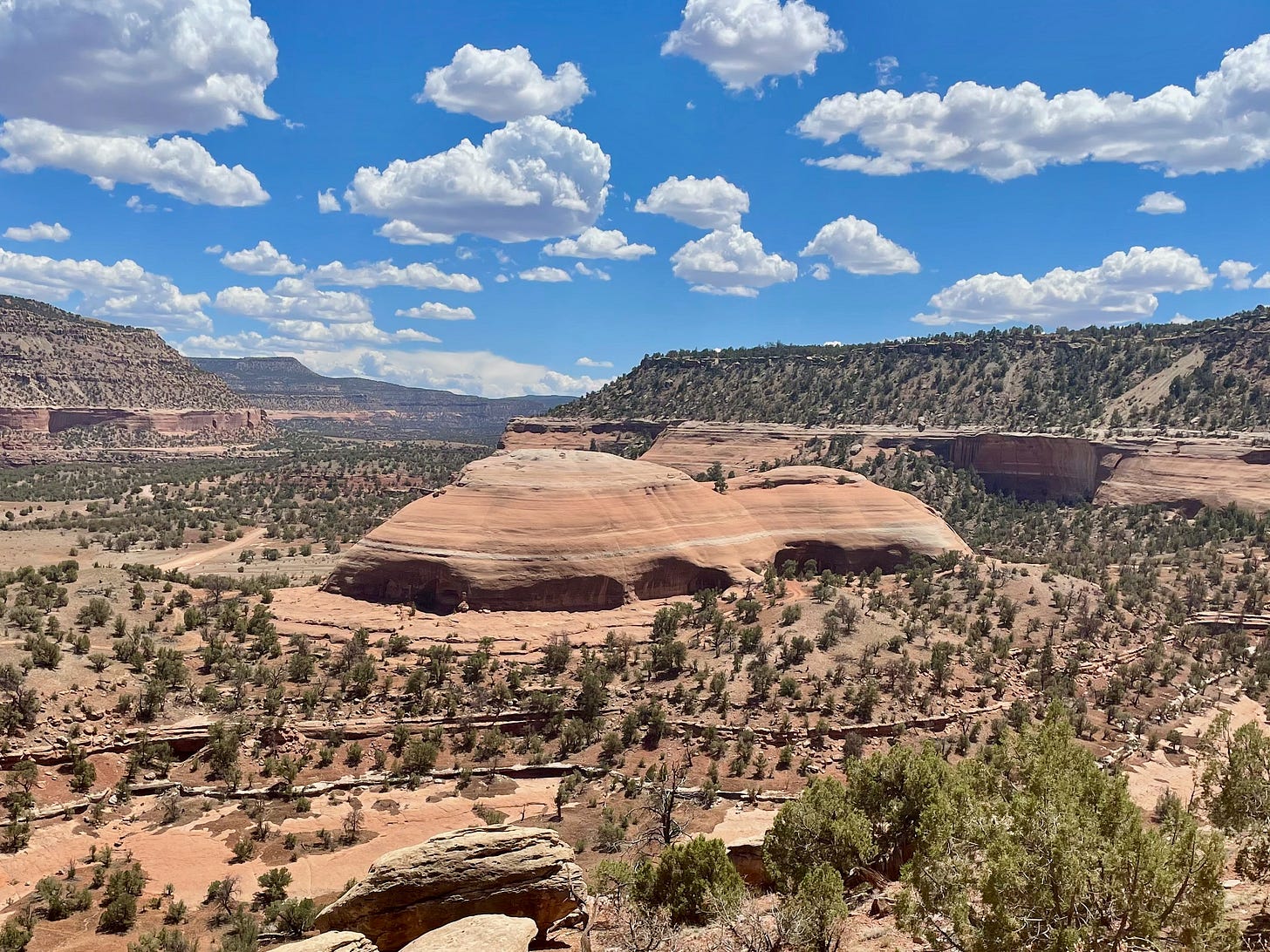
I’ve long been a supporter of the Conservation Lands Foundation, a Durango-based nonprofit that protects and expands the network of National Conservation Lands. These public lands are managed by the Bureau of Land Management and protected as national monuments or by other special designations.
Why does this matter? Intact, wild, and protected public lands are crucial for wildlife corridors and biodiversity, for climate resiliency, and for preserving significant and sacred Native cultural and archeological places. (Learn more here and here.) The BLM manages some 248 million acres, mostly in the West, but only a small fraction (about 15 percent) are protected. The rest are threatened by mining, development, and other human activities.
Yesterday (April 16), reps from Conservation Lands Foundation joined leaders from around the country calling on the Biden Administration to expand national monument designation for many vulnerable public lands (learn more).
Meanwhile, a divisive controversy full of fear and misinformation is playing out in communities to the west of where I live, in the small towns of Nucla and Naturita closer to the Utah border. At issue is a proposal to protect a large swath (approx 400,000 acres, although boundaries are TBD) of Dolores River canyon area by designating it a national monument.
The national monument designation would prevent future mining claims and oil and gas leases, but not affect existing valid claims, existing grazing rights and water rights, or private property. National monument status, created by the president using the Antiquities Act, is important and necessary because the long-running effort to protect the area through congressional legislation has been shrunk, stalled, and is unlikely to pass in the current Congress.
I get why locals care about local control and fear fed action that might compromise their communities’ way of life and economic prosperity. These communities are hurting and transitioning from decades of dependance on mining and coal production. But this protection of the Dolores canyons area is not a “land grab,” because it only affects land already managed by the federal government. It would likely boost the local economies through outdoor recreation. And the bottom line is, we need to move away from extractive, polluting industries toward clean ones, and preserve rather than splinter the wilderness for future generations and for wildlife.
On Tuesday, I’ll go to Nucla when Sen. Hickenlooper visits for a public meeting to show my support for protecting this landscape. I hope you’ll read more and care about it like I do, even if you don’t live near it. Learn more and sign a petition at Protect the Dolores. Follow Conservation Lands Foundation on Instagram and get their email updates.
I also recommend this post by
on his excellent Substack:And, if you’re interested in running around this beautiful place, check out this race report I wrote about a 50K that takes place there in early October, in which I blend some family history (my grandpa ranched there in the ‘30s):
Butt seriously:
Last week, I got my second colonoscopy, which means a major day trip from our neck of the woods because the gastroenterologist is 2.5 hours away in Grand Junction (which makes timing the prep and car drive a bit tricky).
I was nervous because three years ago, at my first one, the doc found pre-cancerous polyps (“tubulovillous adenomas”), one of which was extra big and aggressive. Thank goodness the doc got rid of them—and thank goodness my husband persuaded me to get the colonoscopy (which I didn’t think I needed, because I’m healthy). My husband’s younger brother, who was a year younger than I, died of colorectal cancer in 2021.
We need to talk more about this cancer and get over the “ick” of prepping for the screening. It’s on the rise (see this recent New York Times article, “More Young People than Ever Will Get Colorectal Cancer This Year”), and all adults should get screened by age 45, or younger if they have genetic risks. The bowel prep is unpleasant but not that big of a deal. You need to eliminate certain foods a few days prior, then have a clear-liquid diet in the 24 hours before the procedure, and then follow the instructions the night before to clear out your plumbing. I followed a protocol of a giant dose of Miralax mixed with Gatorade. Then the shit just happens, and it’s not that bad.
wrote a recent post about what’s involved with colonoscopies and bowel prep, worth reading.On the drive to my appointment, I kept thinking of my brother-in-law who died, and also of my gynecologist, Sheena Wisler, an ultrarunner who developed rectal cancer at only 31. I wrote about the harrowing experience she went through, with multiple surgeries, to get the cancer in remission in this article for Trail Runner.
What if a polyp (god, I hate that word) was growing back? The anxiety it sparks in me feels a bit like worrying about mold, carpenter ants, or pack rats working away unseen in the walls, degrading the house, but a thousand times worse because it’s inside you and life threatening.
But I woke up from anesthesia with a clean bill of health. No growths! I am elated and relieved. It’s so good to know. It was worth the prep and the day trip.
Keep print alive:
Like many, I curtailed my magazine-reading habit over the past five-plus years. I read a lot of print books but generally read articles (and lots of Substacks) online. Recently, however, I’ve truly been enjoying the act of reading three running magazines with special long-form prose.
Holding the thick magazine paper while keeping my phone out of reach, I become engrossed in the same way I do when reading a book. I encourage you to subscribe to these quality print magazines to engage in deeper reading, rather than skimming, and help keep them alive. (The fact you’re reading my whole long newsletter to this point tells me you’re a real reader and would enjoy these publications!)
UltraRunning magazine: The original voice of our sport, I started writing for it back in the late ‘90s and still write a column every month or so. I love the longer features by John Trent in particular.
Like the Wind: I only recently discovered this UK-based running magazine, which just celebrated its 10th year. It’s beautiful. (I can’t think of a better word for it.)
Hard Prairie: This is a brand-new high-quality magazine about trail running, and I just finished its first issue. Kudos to writer Chad Sullivan and team for having the guts to launch a print mag.
Thanks for reading all this! I’ll be back next week with a race report from this Saturday’s Leona Divide 100K in Southern California.
Road marathons I’ve run: Napa x 5, Big Sur x 2, Portland, Boston x 2 (not including a virtual one, partly on trail, in 2020), Chicago, California International (Sacramento), Los Angeles x 3, Buenos Aires, Oakland x 3, and Ventura = 20
If you’d like to support this newsletter but would rather not commit to a paid subscription, please consider a small donation to my virtual tip jar.

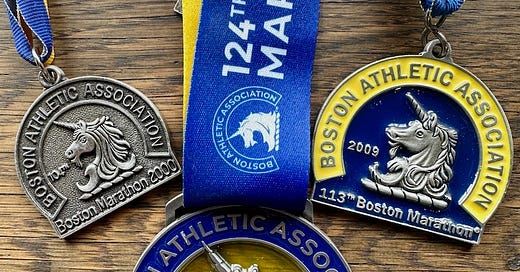


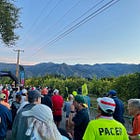

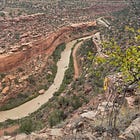

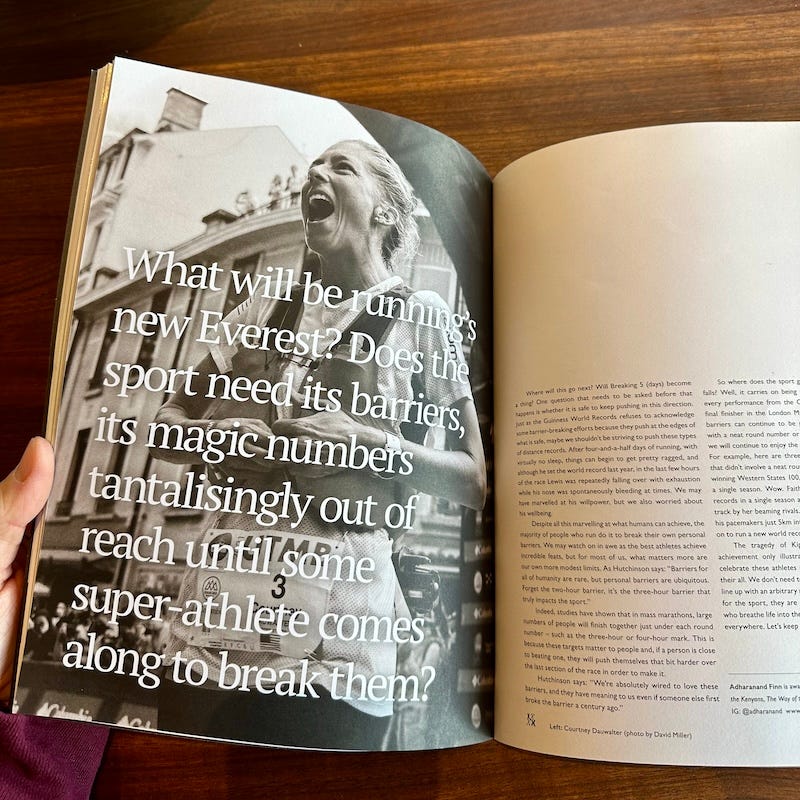
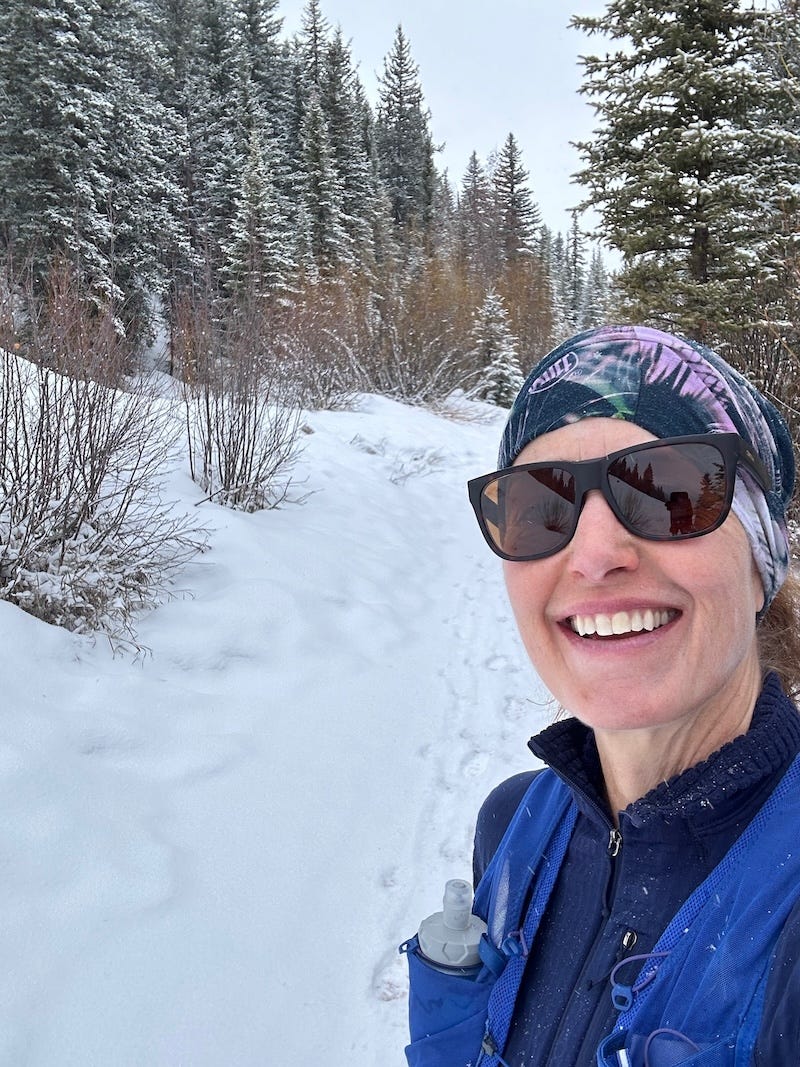
The call of the Boston Marathon… Every year as it gets closer I google BQ times and am reminded that I will never BQ. The environment and support for the race looks amazing and it’s a fun race to watch even if I’ll never run it. Even more than Boston, I’d like to run the NYC marathon. (I grew up in NYC.) Once I’ve done NYC, I’d be content to be done with road marathons (?probably?).
Good Morning Sarah…..I have never run a full marathon. I have always stuck around the half marathon or 10 miler club. I always thought it would be a challenge to train and run a full but the idea of all the training, especially over the weekends, steered me in Another direction. Last year, I ran the 10 mile Urban run for the Colfax Marathon race series, yup, a Colorado native, and it was miserable. I hurt for two weeks afterwards and that was when I decided to shift to trails. The soft ground, the power hiking, somehow has enticed me more than the roads. I feel so strongly about this that I signed up for my first 50K happening this September! I decided to skip right over the marathon distance:)! I don’t know how that will go but I feel confident that it will be a blast!